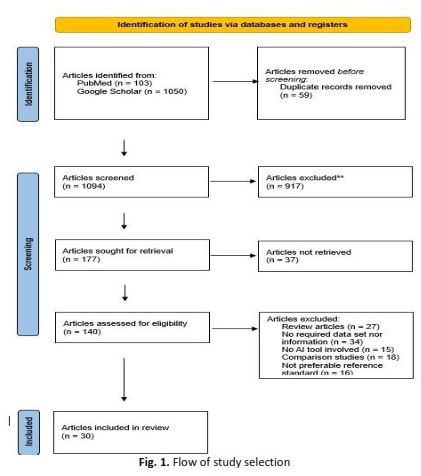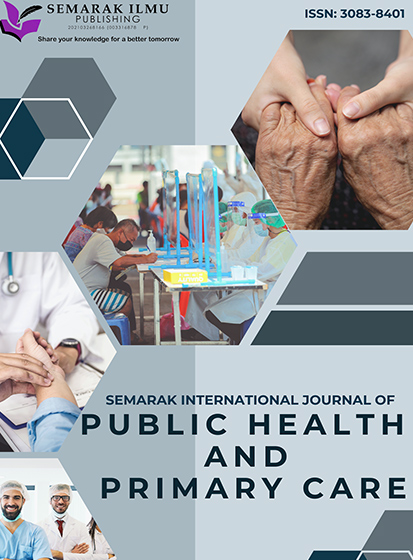Diagnostic Performance of AI in Detecting and Classifying Prostate Cancer in MRI in Comparison to Histopathological Result: A Systematic Review
DOI:
https://doi.org/10.37934/sijphpc.3.1.109120Keywords:
Artificial Intelligence, diagnostic performance, magnetic resonance imaging, prostate cancer, systematic reviewAbstract
Prostate cancer (PCa), the second leading cause of cancer death in men globally, highlights the need for effective early detection methods. While prostate needle biopsy remains the gold standard, it is invasive and relies on the skill of the practitioner. Magnetic resonance imaging (MRI) is currently the primary method for pre-biopsy detection, and artificial intelligence (AI) models are emerging as promising tools to enhance diagnostic accuracy. This systematic review systematically evaluated the diagnostic performance of MRI-based AI models for detecting and classifying prostate cancer, comparing them to histopathological results. Out of 1153 studies, 30 met the criteria for inclusion. Detection models demonstrated high performance with AUC values ranging from 0.78 to 1.00, while classification models had AUC values between 0.64 and 0.93. Sensitivity varied significantly, with detection models showing 69.6% to 100% and classification models showing 46.81% to 100%. Comparisons between AI models and radiologists’ interpretations showed similar performance levels in ten studies. Overall, AI models were more effective in detecting prostate cancer than in classifying it, suggesting their potential to improve diagnostic accuracy. However, the variability in performance highlights the need for careful integration of AI into clinical practice and radiological workflows.













